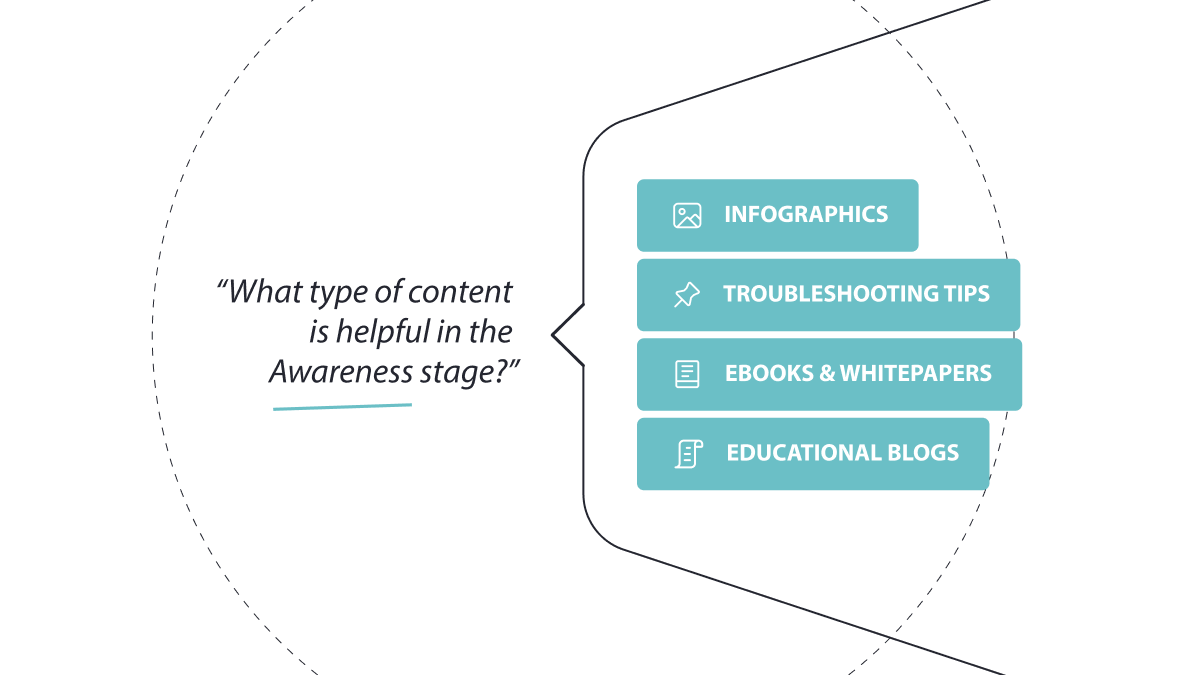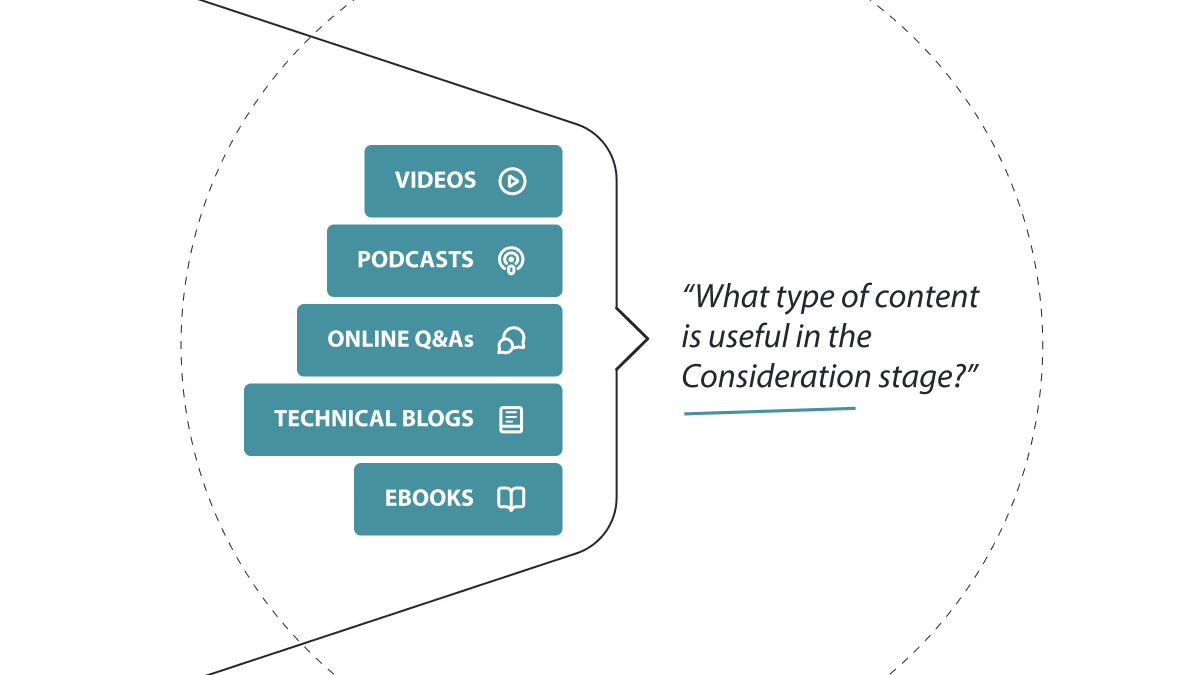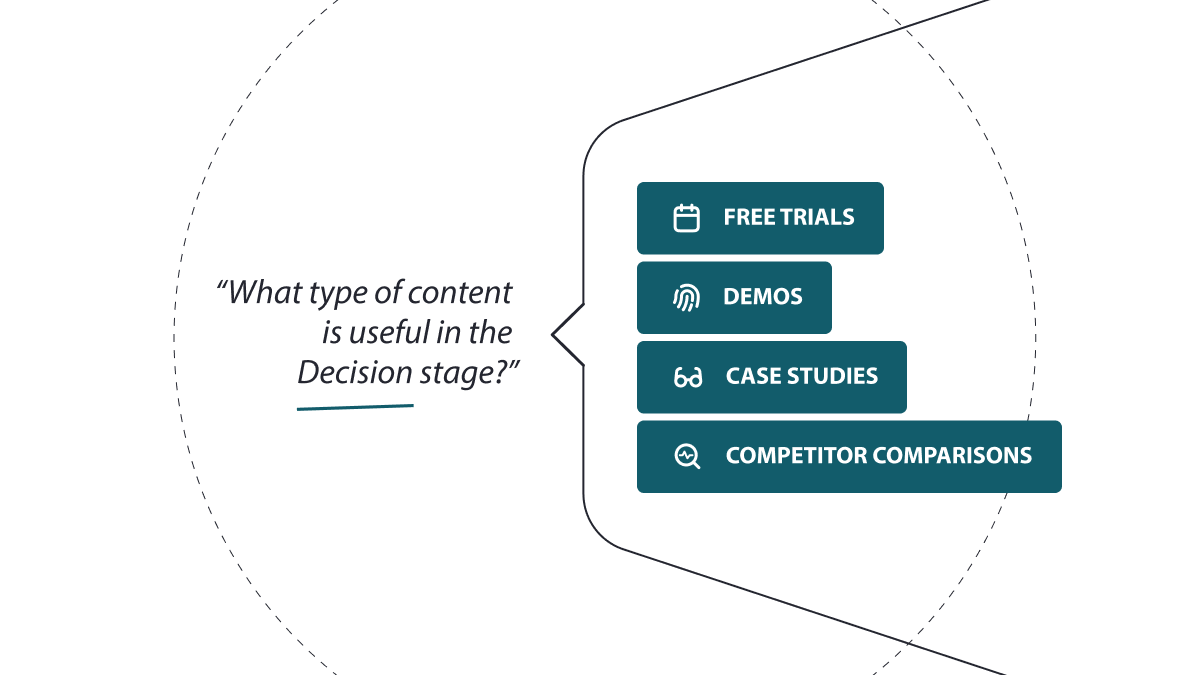|
In the complex B2B contract manufacturing space, generic content is a gamble. Your strategy demands the same precision as your factory floor. Here's how to strategically deploy eleven high-impact content types across the three buying stages—from awareness to decision—to align marketing with sales and prove predictable ROI. |
Content marketing offers contract manufacturing companies a powerful strategy to build an engaged audience, boost revenue, and attract better-fit customers.
But what kind of content should contract manufacturers be creating? Let's find out.
Content comes in all shapes and sizes, from written and visual content, blog posts, and videos to case studies and webinars. Embracing this diverse range of formats brings numerous benefits to contract manufacturers.
It allows them to engage with their target audience through different channels, cater to various learning preferences, showcase their expertise and provide valuable insights that resonate with their customers.
In this blog post, we'll dive deeper into the various types of content and discuss when and how to use them effectively.
But first, a few things to note before you get started.
Defining your audience
Before you start creating content, you need to understand your target audience. This involves deepening your understanding of your target market and gaining insights into their demographics, pain points, goals, and buying behaviour. Contract manufacturers can tailor their content to resonate with their specific needs and challenges by having a clear picture of their audience.
So who are the OEMs you are trying to attract? How big are they in terms of size and turnover? Who are the individuals involved in the buying process? What are they looking to achieve? What keeps them up at night? And how do they prefer to consume information when buying new solutions?
By understanding your buyers and developing comprehensive buyer persona profiles that detail everything you need to know about them, you can produce more relevant and valuable content they'll want to consume.
Developing buyer personas is a vital component of a successful content marketing strategy. To learn more about developing your buyer personas, check out our detailed guide:
Identifying the buyer's journey
You'll also need to understand the buyer's journey. This is the process that potential buyers go through, from the initial awareness of a problem or need to outsource to the final decision of choosing a contract manufacturer.
The buyer's journey typically consists of three stages:
- During the awareness stage, prospects identify their challenges or opportunities and seek information to better understand their situation. This is where you can create content that educates and raises awareness about the benefits of outsourcing at a top level - without talking about your own services or solutions.

- In the consideration stage, prospects have defined their problem and are actively researching solutions. Here, you can provide valuable content that compares the features and benefits of different solutions - again, without selling your services.

- Finally, in the decision stage, prospects evaluate different contract manufacturers and make their final choice. Here, content that emphasises case studies, customer testimonials, and the quality of services can be instrumental in convincing prospects to choose a particular contract manufacturer. You can only be more explicit about your services and solutions at this stage. The idea is to give prospects the final nudge that choosing you is the right decision.

Eleven types of content and when to use them
1. Blog posts
Your blog is an area of your website where you can share insights, expertise, and industry knowledge. Craft engaging articles that resonate with your target audience, covering topics ranging from manufacturing tips and trends to success stories and problem-solving techniques.
Regularly publishing high-quality content will attract more visitors, establish thought leadership, and generate valuable leads.
Blog posts are one of the most popular forms of written content and are suitable for every stage of the buyer's journey, but mostly at the awareness and consideration stage. Think of blog posts that help prospects understand their pain and compare the pros and cons of different solutions.
2. Long-form content
Sometimes, you must go beyond blogging and delve into more comprehensive content. Long-form content such as guides, white papers and eBooks allow you to educate your prospects in-depth. Take them on a journey, offering detailed explanations of complex manufacturing processes, industry regulations, or innovative solutions.
Long-form content showcases your expertise, builds credibility, and positions your company as a go-to resource. It can also provide conversion opportunities and the chance to start new conversations. And they can be repurposed for different channels, including as pillar pages for your website to help you get found.
Long-form content can be applied to all three stages of the buyer's journey. A top-level piece about outsourcing manufacturing is perfect for the awareness stage. A detailed piece about choosing a contract manufacturer, sustainable manufacturing practices, or supply chain management in contract manufacturing could be valuable for the consideration stage. And for the decision stage, consider compiling several case studies into one eBook.
3. Case studies
Case studies are your chance to shine by showcasing successful client projects. Craft compelling narratives highlighting the challenges you faced, the solutions you provided, and the outstanding results achieved.
Case studies are the most effective decision-stage content type. At this point, your prospects will seek evidence of your expertise and value and look for real-life examples that demonstrate your capabilities.
4. Videos
Videos are highly engaging content that can be used on your website and social media. Video can be effective at different stages of the buyer's journey, depending on their purpose and content.
Video content that educates prospects and answers common questions can grab attention, generate interest and introduce prospects to your brand. While showing off your state-of-the-art facilities, virtual tours of your production lines and video case studies engage prospects and create a memorable brand experience that may give them the final 'nudge' to work with you.
5. Pillar pages
One of the best ways to deliver search engine optimisation (SEO) success is to develop strategic content 'clusters' around a central topic. At the heart of this topic is a comprehensive resource page called a 'pillar page'. This covers the main topic in-depth and links to high-quality content (blogs) on supporting subtopics.
Pillar pages are primarily designed to cater for the awareness and consideration stages of the buyer's journey, as they offer a holistic view of a subject, addressing common questions, challenges, and solutions related to the topic.
Structured for search engine visibility, pillar pages attract organic traffic and position your brand as an authoritative resource. They become to-go references for prospects seeking industry-specific information.
6. Infographics
Who says manufacturing data has to be dull? Enter the vibrant world of infographics. Simplify complex concepts, process workflows, or industry statistics through visually appealing graphics. Infographics catch the eye, make information easily digestible, and can be shared on your social media channels to boost engagement. They're great for sharing knowledge while adding a touch of creativity to your content arsenal.
Infographics can be valuable across all stages of the buyer's journey. However, they are particularly effective at the awareness stage. They are highly shareable and can attract social media engagement, driving more people to discover your brand and explore further content.
7. Carousel posts
Carousel posts are a social media content format that allows you to share multiple images or videos within a single post. Users can move through the images by swiping left, while those on a desktop can click through using the arrow button on the right-hand side of the post.
Each image or video can have its own caption, providing an opportunity to tell a story, share multiple perspectives, or showcase different products or features.
Carousel posts are highly engaging and can effectively grab attention, convey a cohesive message, and encourage user interaction through likes, comments, and swipes. They are becoming increasingly popular amongst content marketers.
8. Emails
Emails are a versatile and effective content type. They can be used to deliver newsletters to blog subscribers, share middle-of-the-funnel content such as eBooks and webinars with prospects, and send targeted sales emails to convert prospects into customers. With emails, contract manufacturers can engage their audience, nurture leads, and drive conversions effectively.
9. Research
Incorporating industry research and market insights into your content library adds credibility and depth. Conduct surveys, studies and analyses to provide valuable data to your audience. While research content can also be helpful for awareness and decision stages, its focus on delivering valuable, data-driven information aligns it particularly well with the consideration stage.
By leveraging research content, you can improve brand awareness, establish yourself as an industry authority, and reach a wider audience, attracting attention from both prospects and peers.
10. Webinars and virtual events
Hosting webinars and virtual events enables you to educate your audience, address industry challenges, and provide actionable solutions. Collaborate with industry partners and experts to deliver valuable content that keeps attendees coming back for more.
Webinars and events are not only great lead generators but also an opportunity to establish yourself as a thought leader in the contract manufacturing realm. They make for highly effective consideration stage content, as, at this point, a potential customer has already identified their problem and needs and is researching and evaluating possible solutions.
11. Podcasts
Hosting a podcast allows you to share industry insights, conduct interviews with experts, and discuss manufacturing trends - making it an effective medium for awareness stage content. Dive deep into topics that matter to your audience, offering valuable knowledge and fostering a sense of community. With regular episodes, you'll establish authority, grow a loyal following, and even attract potential clients. Podcasts are an excellent fit for audiences who don't have the interest or the time to invest in reading content every day.
Conclusion
By investing in content marketing and leveraging the power of various types of content, contract manufacturers can attract and engage potential customers throughout the buyer's journey. From informative blog posts to captivating videos and insightful case studies to visually appealing infographics, each content format plays a vital role at different stages. So, start creating compelling content and connect with right-fit OEMs in meaningful ways.
FAQs
What assets shorten the sales cycle for complex contract manufacturing deals?
The fastest way to shorten the cycle is to address the final objections upfront. Assets like detailed case studies, testimonials, and an interactive ROI calculator provide immediate, measurable proof that mitigates financial risk and validates the business case. You are moving from a technical conversation to a commercial one quickly.
Which content assets help address compliance and technical validation concerns?
In sectors like CDMO (Life Sciences) and EMS (Electronics), regulatory and quality assurance is non-negotiable. High-value assets, such as whitepapers, technical specification guides, and long-form video tutorials that detail your process control and quality systems, are essential. They build the technical trust necessary for the Procurement Lead and Quality Manager to sign off.
What type of content convinces a sceptical Head of Sales?
Sales leaders don't need fluff; they need qualified leads and predictable revenue. The content that convinces them is operational: ICP and buyer persona definitions that clarify who a good-fit customer is, competitive differentiation guides that empower their team, and RFQ-ready sales enablement packs that streamline the final proposal stage. It must deliver a better pipeline, not just brand awareness.
Editor's note: This blog was first written in September 2023 and has been updated in December 2025 for relevance and accuracy.


